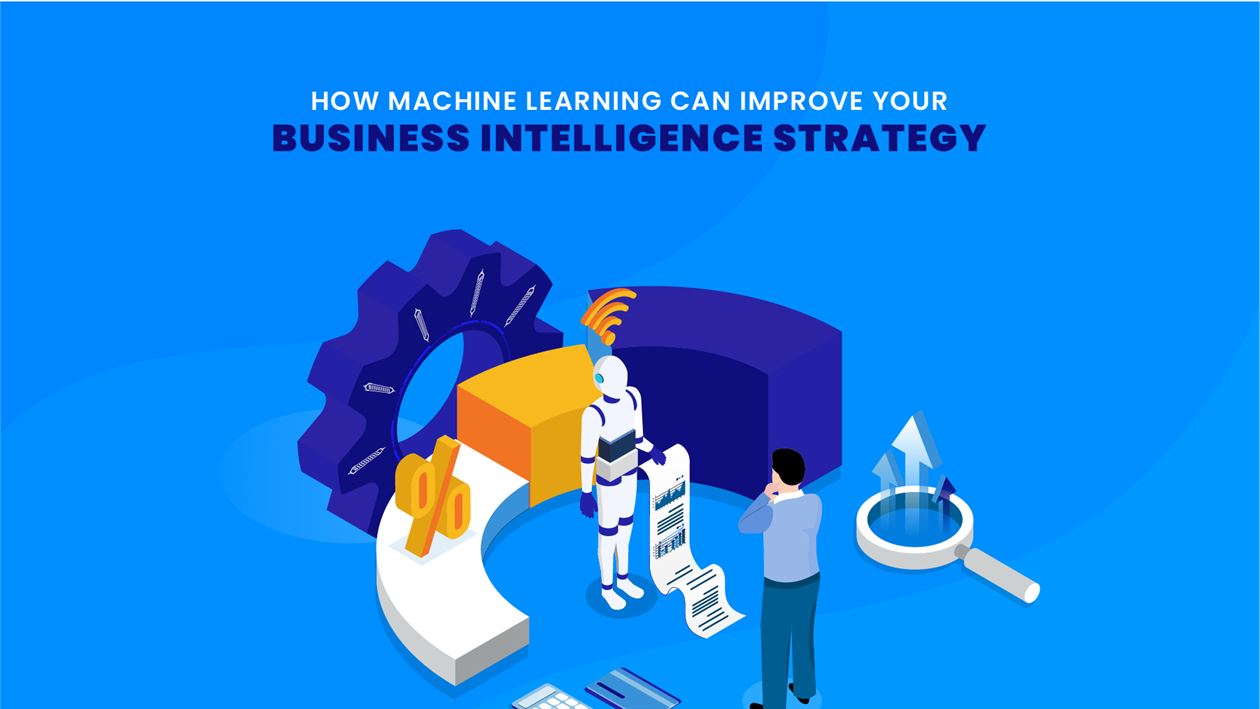In today’s data-driven environment, businesses are constantly seeking innovative ways to extract valuable insights from massive volumes of data. Machine learning offers a powerful solution to this challenge. By leveraging machine learning algorithms, businesses can elevate their business intelligence (BI) strategies and make better-informed decisions. In this blog, we will delve into how machine learning can enhance your BI approach and propel your company forward.
Enhanced Data Processing and Analysis:
One of the primary advantages of incorporating machine learning into business intelligence is its ability to handle and analyze vast amounts of data at an unprecedented rate. Modern datasets are often too complex and extensive for traditional BI techniques to handle effectively. However, machine learning algorithms excel at identifying patterns, trends, and correlations that human analysts may overlook. By leveraging machine learning, you can gain deeper insights into your data, uncover untapped opportunities, and confidently make data-driven decisions.
For instance, imagine you’re a retail business analyzing customer purchase data. Traditional BI methods might struggle to identify subtle purchase patterns that indicate shifting consumer preferences. In contrast, machine learning algorithms can employ techniques such as clustering or association rule mining to identify these patterns. By segmenting customers based on their purchase history, demographics, and browsing behavior, machine learning algorithms can reveal distinct customer groups with similar preferences. This enables you to adapt your product offerings, marketing strategies, and pricing models to better cater to each customer segment, ultimately boosting sales and customer satisfaction.
Predictive Analytics for Accurate Forecasting:
Machine learning algorithms work seamlessly with predictive analytics to enable accurate forecasting, empowering businesses to anticipate future events with greater precision. By training models on historical data, you can predict consumer behavior, demand patterns, revenue estimates, and more. This enables you to manage inventory more effectively, optimize production and marketing plans, and ultimately increase productivity while reducing costs. Leveraging machine learning allows you to transition from reactive to proactive approaches based on precise projections.
Consider an e-commerce business using machine learning for demand forecasting. The process typically involves several steps:
- Data Collection: Gather historical sales data, website traffic data, promotional activities, and other relevant variables.
- Data Preparation: Clean and preprocess the data, handling missing values, outliers, and inconsistencies.
- Feature Engineering: Extract relevant features from the data that might impact demand, such as seasonality, holidays, or marketing campaigns.
- Model Training: Select an appropriate machine learning algorithm, such as a time-series model or a regression model, and train it on the prepared data.
- Model Evaluation: Assess the performance of the trained model using evaluation metrics such as mean absolute error or root mean square error.
- Forecasting: Utilize the trained model to make future demand predictions based on new input data.
By accurately forecasting demand, businesses can optimize inventory levels, adjust production schedules, plan marketing campaigns, and allocate resources more effectively. This results in reduced stockouts, minimized excess inventory, and improved customer satisfaction.
Personalized Customer Experiences:
Customer-centricity is a key factor in the success of any business, and machine learning can significantly enhance your ability to deliver personalized experiences. By analyzing customer data such as demographics, browsing behavior, purchase history, and preferences, machine learning algorithms can generate personalized recommendations, tailored marketing campaigns, and targeted offers. This level of personalization boosts engagement, enhances customer satisfaction, and ultimately drives loyalty and revenue growth.
Let’s take the example of a streaming service provider using machine learning for content recommendations. The process typically involves the following steps:
- Data Collection: Gather user data, including viewing history, ratings, search queries, and demographic information.
- Data Preprocessing: Clean the data, handle missing values, and transform it into a suitable format for analysis.
- Feature Extraction: Extract relevant features from the data, such as genre preferences, viewing habits, and similar user profiles.
- Model Training: Select an appropriate machine learning algorithm, such as collaborative filtering or content-based filtering, and train it on the prepared data.
- Model Evaluation: Assess the performance of the trained model using metrics such as precision, recall, or mean average precision.
- Recommendation Generation: Utilise the trained model to generate personalised content recommendations for each user based on their preferences and behaviour.
By delivering personalised recommendations, the streaming service provider can enhance the user experience, increase user engagement, and prolong user sessions. This, in turn, improves user retention and drives revenue growth through increased subscriptions or ad views.
Fraud Detection and Risk Management:
Fraud detection and risk management are critical for organisations across various industries. Machine learning algorithms can be trained to identify trends and anomalies in data, enabling early detection of fraudulent transactions, suspicious activities, or potential security breaches. By incorporating machine learning into your BI strategy, you can enhance fraud detection capabilities, safeguard sensitive data, and protect your assets.
Let’s consider the example of a financial institution using machine learning for credit card fraud detection. The process typically involves the following steps:
- Data Collection: Gather historical transaction data, including details such as transaction amount, location, time, and customer information.
- Data Preprocessing: Clean the data, handle missing values, and normalise or scale the features.
- Feature Engineering: Extract relevant features from the data that might indicate fraudulent activity, such as transaction frequency, spending patterns, or unusual transaction amounts.
- Model Training: Select an appropriate machine learning algorithm, such as a decision tree or a neural network, and train it on the prepared data.
- Model Evaluation: Assess the performance of the trained model using evaluation metrics such as accuracy, precision, recall, or F1-score.
- Real-time Monitoring: Deploy the trained model to analyse incoming transactions in real-time, flagging potentially fraudulent transactions for further investigation or triggering automated preventive measures.
By leveraging machine learning for fraud detection, the financial institution can detect fraudulent transactions early, minimise financial losses, protect customer assets, and maintain trust and credibility among its customers.
Streamlined Decision-Making with Automation:
Machine learning can automate time-consuming and repetitive tasks within your business intelligence ecosystem, freeing up valuable resources and allowing your team to focus on higher-value work. Machine learning algorithms can streamline various steps in the data analysis and reporting process, including data cleaning and preprocessing, report generation, and anomaly detection. By saving time and reducing the possibility of human errors, this approach provides more reliable insights and facilitates faster decision-making processes.
For example, consider a healthcare organisation using machine learning to analyse medical records. The process might involve the following steps:
- Data Integration: Collect and integrate medical records from various sources, such as electronic health records, lab results, and medical imaging data.
- Data Cleaning and Preprocessing: Clean the data, handle missing values, remove noise, and standardise formats.
- Feature Extraction: Extract relevant features from the data, such as patient demographics, medical history, symptoms, or laboratory values.
- Model Training: Select an appropriate machine learning algorithm, such as a decision tree or a deep learning model, and train it on the prepared data.
- Model Evaluation: Assess the performance of the trained model using evaluation metrics such as accuracy, sensitivity, specificity, or area under the curve.
- Automated Analysis: Deploy the trained model to analyze new patient data, aiding in diagnosis, treatment recommendations, or disease prognosis.
By automating the analysis of medical records, the healthcare organisation can improve the accuracy and efficiency of diagnoses, facilitate personalised treatment plans, and ultimately enhance patient outcomes.
In conclusion, machine learning has the potential to revolutionise the way businesses approach business intelligence. By harnessing the power of data and complex algorithms, companies can gain a competitive edge, streamline processes, and drive growth. Embracing this technology empowers organisations to thrive in the data-driven era by unlocking valuable insights. So, get ready to explore the possibilities and maximise the use of machine learning in your business intelligence strategy.





